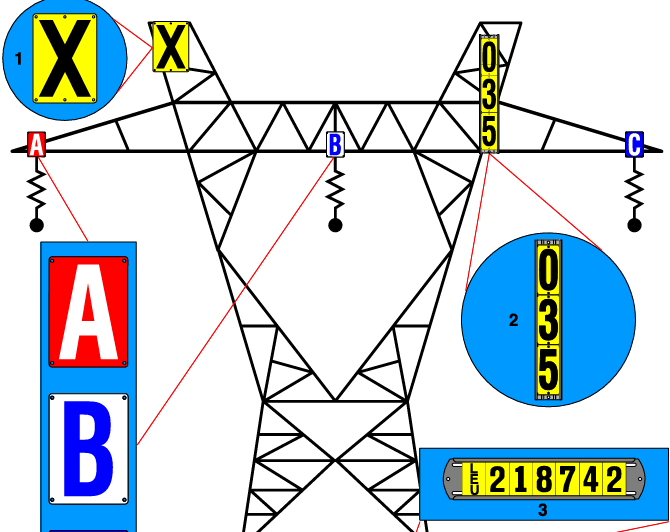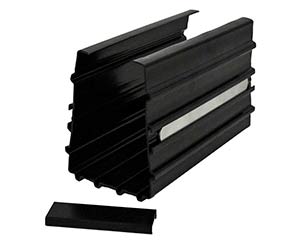Arc Flash Victim - Learn How Not To Become One
By R.W. Hurst, Editor

CSA Z462 Arc Flash Training - Electrical Safety Essentials
Our customized live online or in‑person group training can be delivered to your staff at your location.

- Live Online
- 6 hours Instructor-led
- Group Training Available
Download Our OSHA FS3529 Fact Sheet – Lockout/Tagout Safety Procedures

- Learn how to disable machines and isolate energy sources safely
- Follow OSHA guidelines for developing energy control programs
- Protect workers with proper lockout devices and annual inspections
An arc flash victim may suffer burns, hearing loss, or death. These incidents occur when electrical energy is released due to a fault. Recognizing the risks enables companies to enhance their PPE, training, and prevention measures, thereby improving protection for electrical workers.
What is an Arc Flash Victim?
An arc flash victim is a person injured by the sudden release of electrical energy caused by an arc fault.
? Suffers serious injuries such as burns, hearing loss, or blindness
? Often due to inadequate PPE or poor safety procedures
? Highlights the need for better arc flash training and hazard awareness
Request a Free Training Quotation
This high-temperature event can cause serious burns, hearing loss, and even fatal. In the United States, incidents contribute to hundreds of workplace accidents and fatalities each year. Implementing comprehensive electrical safety protocols, including proper training and the use of appropriate personal protective equipment (PPE), is crucial in reducing the risk of such accidents. Regular maintenance and adherence to safety standards can significantly reduce the likelihood of an electrical explosion occurring, thereby ensuring a safer working environment. Employers play a key role in protection; understand their responsibilities in "Who's Responsible for Protecting You from Arc Flashes."
Frequently Asked Questions
Who is Most Likely a Victim?
Individuals most likely injured are those who work directly with or near electrical equipment. This includes:
-
Electricians: Often working on live circuits and panels.
-
Maintenance Workers: Performing routine checks and repairs on electrical systems.
-
Engineers and Technicians: Involved in testing and troubleshooting electrical components.
-
Apprentices and Trainees: Less experienced workers who may be unaware of the hazards.
These workers face higher risks due to their frequent exposure to electrical systems.
Which Situation is Most Likely to Cause Harm?
An arc flash victim is usually involved in working on or near live electrical equipment. The most likely situations include:
Sign Up for Electricity Forum’s Arc Flash Newsletter
Stay informed with our FREE Arc Flash Newsletter — get the latest news, breakthrough technologies, and expert insights, delivered straight to your inbox.
-
Maintenance and Testing: Performing maintenance or testing on energized electrical panels and equipment without proper safety protocols.
-
Accidental Contact: Coming into accidental contact with live parts due to improper use of tools or protective equipment.
-
Equipment Failure: Malfunctions or failures in electrical equipment that cause an unexpected release of energy.
-
Poor Electrical Safety Practices: Neglecting to follow safety procedures, such as lockout/tagout protocols, increases the risk of an explosion occurring.
These situations can cause significant harm if proper precautions are not taken.
Proper personal protective equipment (PPE) can significantly reduce the severity of injury. Explore the Arc Flash PPE Guide for detailed information.
What Are the 4 Severity Factors?
The severity of depends on several factors:
-
Proximity to the Arc: The closer a person is to the arc, the more likely they will receive a burn. Proximity affects the intensity of light and heat force from the explosive pressure wave experienced by the victim.
-
Duration of the Arc: Longer exposure to the arc results in more severe outcomes. Quick operation of protective devices can limit the duration and mitigate the impact.
-
Incident Energy Level: Higher energy levels released during the flash cause more significant damage, including severe burns.
-
Personal Protective Equipment (PPE): The use and effectiveness of PPE, such as flame-resistant clothing, face shields, and gloves, play a crucial role in minimizing risk.
What is the First Aid for an Arc Flash Victim?
Providing immediate and effective first aid is essential for injured workers to minimize further harm. Key steps include:
-
Ensure Safety: Before assisting the victim, ensure the area is safe and de-energized to prevent further harm.
-
Call for Help: Immediately call emergency services for professional medical assistance.
-
Assess and Address Burns: Victims receive severe burns to their skin. Cool the burns with clean, cool water (not ice) and cover with a sterile, non-adhesive bandage.
-
Treat Electric Shock: If the victim shows signs of electric shock, such as unconsciousness or irregular heartbeat, administer CPR if trained to do so.
-
Monitor Breathing and Consciousness: Regularly check the victim’s breathing and level of consciousness while waiting for medical assistance. Be prepared to administer additional first aid if necessary.
-
Prevent Infection: Avoid touching the burns directly and keep the affected areas clean to reduce the risk of infection.
-
Hearing and Lung Damage: Arc blast can cause hearing loss and lung damage due to the intense sound and pressure. If the victim has trouble breathing or hearing, inform medical personnel upon their arrival.
Arc flash is a serious hazard that can result in multiple types of outcomes for the electrical worker, including skin burns, electric shock, hearing loss, and lung damage. Situations such as maintenance on live equipment, accidental contact due to human error, equipment failure, and poor safety practices all increase the risk of these incidents. Electricians, maintenance workers, engineers, and trainees are particularly vulnerable. Regular safety training is essential for prevention; consider Arc Flash Training program.
Factors like proximity to the arc, duration of exposure, incident energy level, and the use of personal protective equipment influence the risk of death. Immediate first aid, including ensuring safety, calling for help, cooling burns, treating electric shock, and monitoring the victim, is critical for mitigating the effects of an incident.
By understanding the risks and implementing effective safety measures, we can protect workers from the devastating impacts of electrical explosions and ensure a safer working environment. Analyzing past incidents provides valuable lessons; read our Arc Flash Fatality case studies and What Is Arc Flash for insights.
Related Resources








